Disclosure: This article contains affiliate links. We may earn a commission from purchases at no extra cost to you, which helps our travel content.
The first time I set foot in Oklahoma City, I expected to find a typical mid-sized American city with maybe a few historical buildings worth photographing for my preservation blog. What I discovered instead was a place where the past and present intertwine with remarkable transparency—where tragedy and triumph are honored with equal measure, and where industrial innovation has repeatedly transformed the landscape. As someone who's spent countless hours crawling through the mechanical guts of historical buildings, I've developed an appreciation for how structures tell stories. And let me tell you, OKC's stories run deep. This weekend guide isn't your standard tourist itinerary—it's a journey through the physical spaces that have shaped this city's identity, from somber memorials to revitalized industrial districts. Whether you're bringing along your partner for a meaningful weekend exploration or flying solo like I often do, these historical landmarks will give you a profound understanding of Oklahoma City's soul.
The Oklahoma City National Memorial & Museum: Engineering Remembrance
As an electrician, I've wired countless buildings, but rarely have I encountered a structure where the electrical and mechanical systems were designed specifically to evoke emotion. The Oklahoma City National Memorial occupies the former site of the Alfred P. Murrah Federal Building, where 168 lives were lost in the 1995 bombing. The memorial's design is a masterclass in using architecture and engineering to create space for reflection.
The Reflecting Pool, stretching between the 9:01 and 9:03 Gates of Time, represents the moment (9:02 am) when the bombing occurred. What struck me was the precision of the water management system—creating a perfect mirror-like surface that's exactly ankle-deep. The engineering team told me during my visit that maintaining this specific depth required custom-designed circulation systems to account for Oklahoma's variable weather patterns.
Inside the museum, the technical aspects continue to impress. The preserved portions of the original building's foundation are exposed in a way that shows both structural damage and resilience. As someone who's worked in building restoration, I could see how carefully they'd preserved these elements while making them safely accessible to visitors.
The most powerful exhibit for me was the Gallery of Honor, where personal artifacts of those lost are displayed in custom-built illuminated cases. The lighting design here deserves special mention—soft, directional LEDs that highlight each item without casting shadows or creating glare on the protective glass. It's the kind of thoughtful technical detail that most visitors might not consciously notice but that profoundly affects the emotional experience.

💡 Pro Tips
- Visit early in the morning when the memorial is quietest and the lighting on the chairs is particularly moving
- Allocate at least 2-3 hours for the museum portion—rushing through undermines the experience
- The outdoor memorial is open 24 hours and is particularly powerful at night when illuminated
Bricktown: Industrial Heritage Reimagined
When I visit cities with my son during his school breaks, I'm always on the lookout for places where he can see how America's industrial past has shaped our present. Bricktown is precisely that kind of place. Once a warehouse district that served the railroads, it's now Oklahoma City's entertainment hub—but one that hasn't erased its working-class roots.
What fascinates me most about Bricktown is how the original electrical and mechanical systems have been repurposed. In several buildings, the old freight elevators have been preserved as architectural features, their motors and pulleys now visible through glass enclosures. The massive wooden beams that once supported heavy machinery now frame restaurants and shops. You can still see the original loading docks, now serving as elevated patios.
The canal that runs through Bricktown is a modern addition, completed in 1999, but it was designed to evoke the industrial waterways that once served similar districts in eastern cities. As an electrician who's worked on outdoor lighting systems, I was particularly impressed with how they've illuminated the walkways along the canal—warm, diffused lighting that creates ambiance without light pollution.
For exploring the district, I recommend wearing comfortable shoes like my trusty hiking shoes. Bricktown's brick streets and canal paths involve more walking than you might expect, and these shoes have the perfect combination of support and water resistance for Oklahoma's unpredictable weather.
Don't miss the series of bronze sculptures along the canal depicting the Land Run of 1889—they tell the complicated story of Oklahoma's settlement in a visually striking way, though I do wish they included more perspectives from indigenous communities affected by this history.

💡 Pro Tips
- Take the water taxi for a guided historical tour—the operators often share engineering details about the canal system you won't hear elsewhere
- Visit Bricktown Brewery to see how they've incorporated original industrial equipment into their brewing process
- Look for the faded ghost signs on brick walls that reveal former businesses from the early 1900s
The First Americans Museum: Cultural Preservation Through Design
As someone who documents America's industrial and colonial history, I've become increasingly aware of whose stories are centered in our historical narratives and whose are marginalized. The First Americans Museum (FAM), which opened in 2021 after decades of planning, represents a significant step in addressing this imbalance by focusing on the 39 tribal nations in Oklahoma.
What immediately struck me about FAM was how the building itself serves as both container and content. The architects incorporated indigenous design principles throughout the 175,000-square-foot structure. The most notable feature is the massive glass dome that aligns with cardinal directions and solstice points—essentially functioning as a giant solar calendar. As someone who appreciates technical precision, I was fascinated by how the building's orientation creates specific light effects on significant dates.
The museum's climate control and preservation systems are equally impressive. Having worked in historical buildings where temperature and humidity fluctuations threaten artifacts, I could appreciate the sophisticated systems maintaining optimal conditions for delicate items while remaining hidden from view. The exhibition halls use directional sound design that allows different audio elements to coexist without interference—creating immersive environments without overwhelming visitors.
For photography enthusiasts, this museum presents unique challenges due to the carefully designed lighting. I found my compact camera particularly useful here, as its excellent low-light performance and unobtrusive size made it perfect for capturing details without disturbing other visitors' experiences. The camera's adjustable LCD screen also helped me frame shots of artifacts in display cases without awkward reflections.
The FAM doesn't shy away from difficult histories, including forced relocation and cultural suppression, but it balances these narratives with celebrations of resilience, artistic traditions, and contemporary indigenous life. This approach creates a more complete historical understanding than many colonial-focused museums I've visited across America.
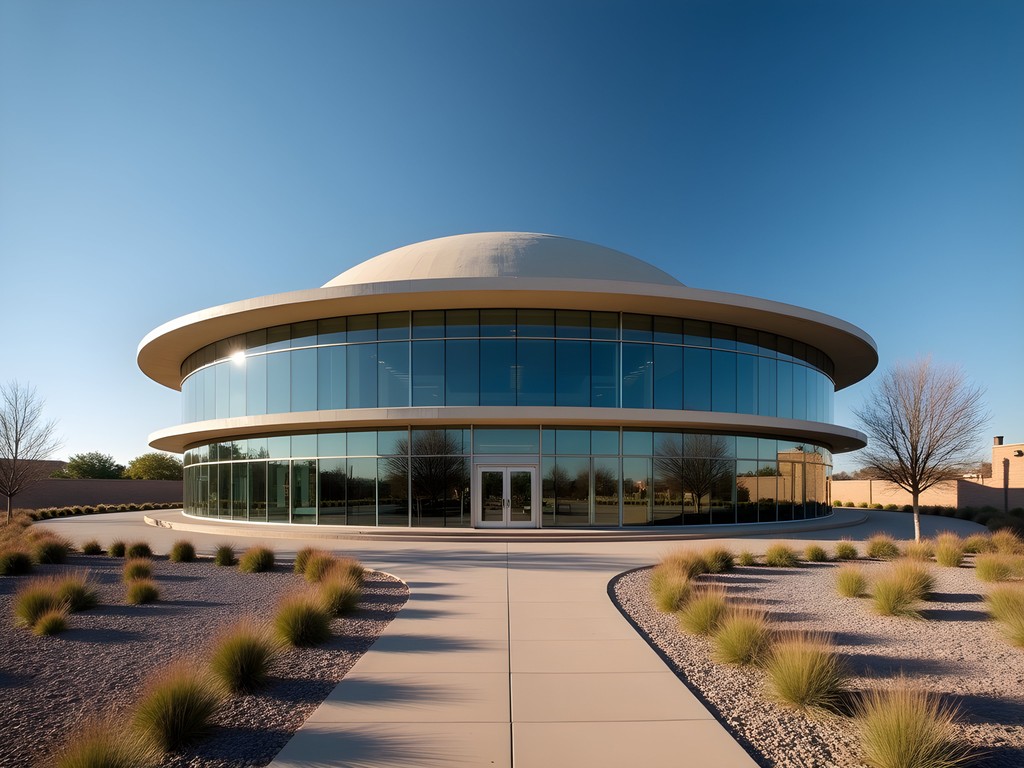
💡 Pro Tips
- Check the event calendar before visiting—the museum regularly hosts cultural demonstrations by tribal members
- Allow at least 3-4 hours to fully experience the exhibits and outdoor areas
- Download the museum's companion app for additional context and translations of indigenous language elements
Stockyards City: America's Working Western Heritage
In my travels documenting America's industrial history, I've developed a particular appreciation for places where historical commerce continues in its original setting. Stockyards City is exactly that—a district that's been operating since 1910 and remains a working livestock market to this day, while simultaneously serving as a cultural landmark.
The Oklahoma National Stockyards Company is the largest stocker and feeder cattle market in the world, and what fascinated me from a technical perspective was seeing how the auction infrastructure has evolved over a century while maintaining its core functions. The original cattle pens have been modified with modern materials but follow the same basic design principles established generations ago. The auction arena itself is a study in acoustic engineering—designed so buyers can clearly hear bids from any position without modern amplification.
For visitors interested in the mechanical aspects of livestock handling, I recommend timing your visit to coincide with Monday or Tuesday morning auctions (starting at 8 AM). This is when you can witness the remarkable efficiency of the operation, from the specialized gates and chutes to the weighing systems.
The historical electrical systems throughout Stockyards City tell their own story. Many buildings retain original knob-and-tube wiring (though no longer in use) alongside modern electrical service—a physical timeline of America's electrification. As an electrician, I found myself photographing junction boxes and service panels that most tourists would walk right past.
No visit to Stockyards City is complete without stopping at Langston's Western Wear, operating since 1913 and still housed in its original building. Beyond being a retail establishment, it's a repository of western craftsmanship—from handmade boots to tooled leather goods that demonstrate techniques passed down through generations.
For documenting this unique district, I rely on my travel journal to record observations about the historical infrastructure and craftsmanship details. The dotted pages are perfect for quick sketches of mechanical systems or architectural elements that catch my eye, while the built-in page numbers help me create an indexed reference I can return to when writing my blog posts.
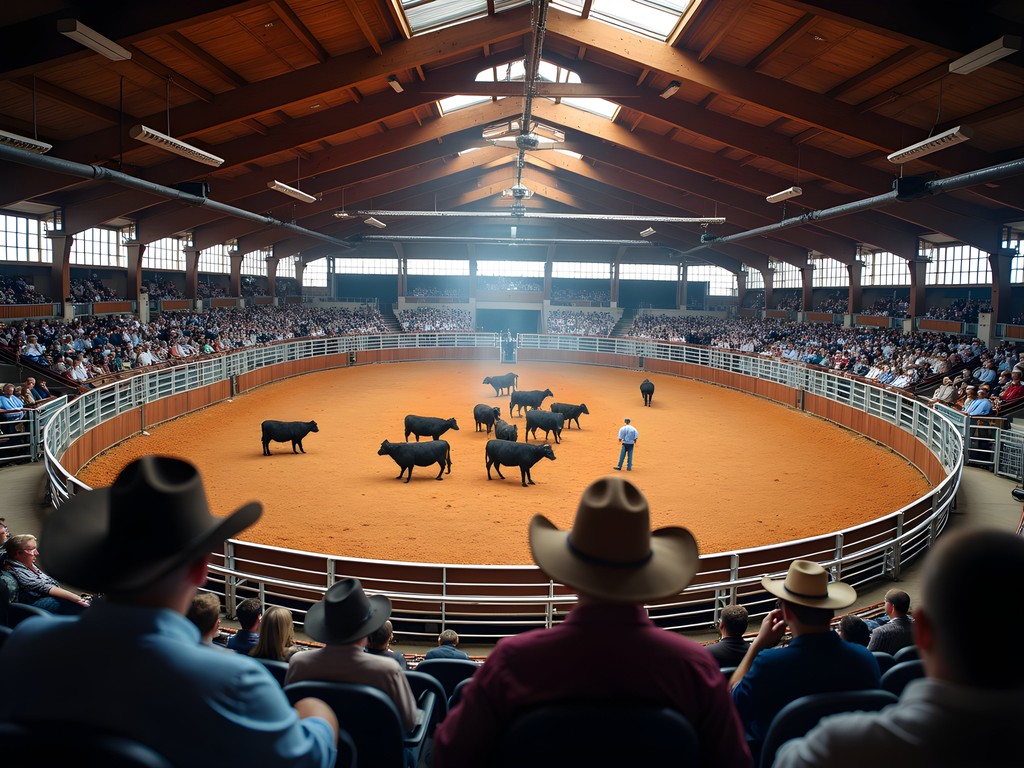
💡 Pro Tips
- Visit on Monday or Tuesday mornings to see the cattle auctions in action
- Look up at the buildings—many original ghost signs and architectural details remain intact above eye level
- Ask permission before photographing working cowboys and livestock handlers—most are friendly but appreciate the courtesy
The Historic Preservation Districts: Architectural Time Capsules
When I travel for my preservation blog, I'm always searching for neighborhoods that tell the story of a city's development through their architecture. Oklahoma City offers several distinct historic districts that provide windows into different eras of the city's growth.
Heritage Hills, established in the early 1900s, contains some of the finest examples of Colonial Revival, Craftsman, and Prairie School architecture in the Southwest. What particularly interests me as an electrician who works in historical preservation is how these homes have been updated with modern systems while maintaining their architectural integrity. During my visit, I was fortunate enough to tour a 1919 Prairie Style home where the owners had painstakingly retrofitted modern electrical systems by fishing wires through existing walls rather than cutting new chases—preserving original plaster while meeting contemporary needs.
The Paseo Arts District represents a different preservation approach. Originally built in 1929 as Oklahoma City's first shopping district, its Spanish Revival buildings fell into disrepair before being revitalized as an arts district in the 1970s. Walking through the curved streets, you can see how the district has balanced preservation with adaptation—maintaining the distinctive stucco exteriors and clay tile roofs while repurposing interiors for galleries and studios.
Militarily Park, listed on the National Register of Historic Places, showcases homes built between 1909 and the 1940s. What makes this district particularly interesting is how it documents the evolution of residential electrical systems. Some homes still have visible remnants of knob-and-tube wiring in their attics and basements, while others showcase early examples of conduit installations—physical evidence of America's electrification journey.
For self-guided tours of these districts, I found my portable power bank essential for keeping my phone charged while using mapping apps and taking photos throughout the day. Oklahoma City's historic districts cover substantial ground, and this power bank has enough capacity to recharge my phone multiple times without needing an outlet.
The Lincoln Terrace Historic District, adjacent to the State Capitol, offers examples of 1920s Revival styles including Tudor, Colonial, and Classical. What's technically fascinating here is how many homes incorporated innovative building systems for their time—early central heating, primitive air conditioning attempts, and some of the city's first residential garage door operators.

💡 Pro Tips
- The third Sunday of December features a Holiday Home Tour in Heritage Hills where you can see preserved interiors not normally accessible
- Download the Oklahoma City Historic Preservation Commission's architectural guide PDFs before your visit for detailed information about significant structures
- Visit the Overholser Mansion for guided tours that include detailed information about early 20th century home systems and technology
Final Thoughts
Oklahoma City's historical landmarks tell a complex story of triumph and tragedy, innovation and preservation. What struck me most during my explorations was how this city embraces its full history—the difficult chapters alongside the proud ones—creating spaces for genuine reflection rather than sanitized nostalgia. As an electrician who's spent years working in America's historic structures, I found OKC's approach to preservation particularly thoughtful, integrating modern functionality while honoring original craftsmanship. Whether you're a history buff, architecture enthusiast, or simply a curious traveler, Oklahoma City offers accessible entry points to understanding America's industrial, cultural, and social evolution. I encourage you to bring your partner for a weekend exploration—having someone to discuss and process these powerful sites enhances the experience tremendously. And if you're anything like me, you'll leave with a deeper appreciation for how our built environment shapes and reflects our collective story.
✨ Key Takeaways
- Oklahoma City balances commemoration of tragedy with celebration of resilience at sites like the National Memorial
- The city's historic districts showcase distinct architectural periods that tell the story of its development
- Many historical sites maintain their original function while accommodating modern visitors
- The preservation approach includes multiple perspectives, including indigenous histories often overlooked elsewhere
📋 Practical Information
Best Time to Visit
Spring (April-May) and Fall (September-October) offer mild temperatures ideal for walking tours
Budget Estimate
$200-350 for a weekend (accommodation, meals, and admission fees)
Recommended Duration
2-3 days to properly experience the major historical sites
Difficulty Level
Easy - Most Sites Are Accessible And Close To Downtown



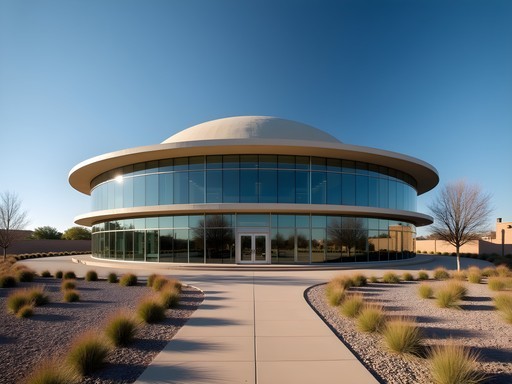
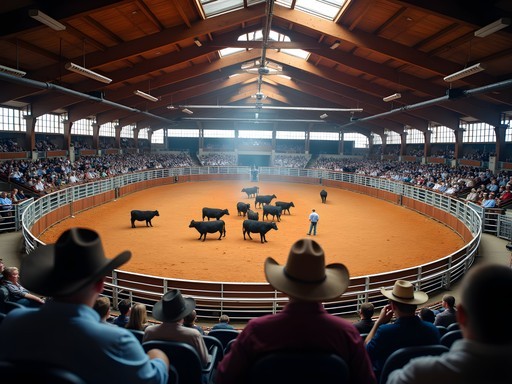
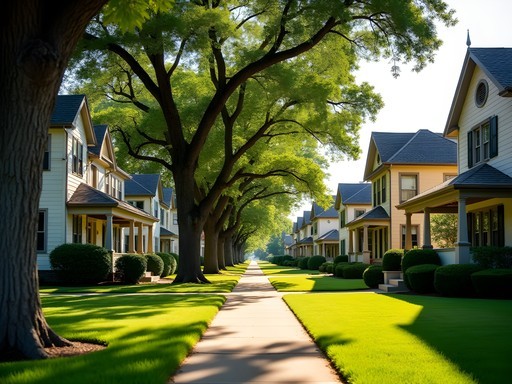


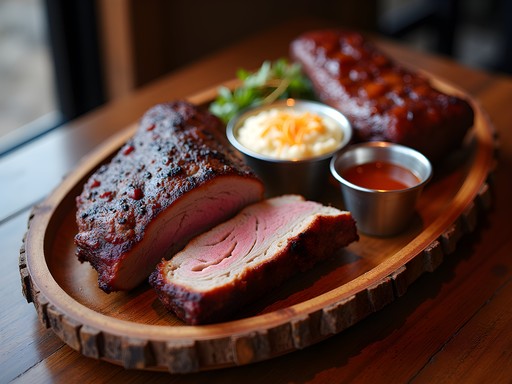
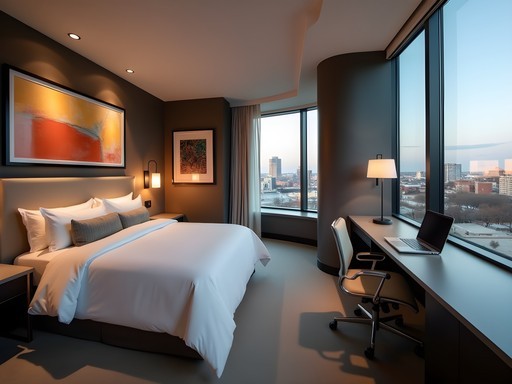






Comments
Raymond Hassan
Jennifer, your post captures exactly what surprised me about Oklahoma City when I backpacked through the American Midwest last year. The juxtaposition of the somber National Memorial with the vibrant energy of Bricktown creates such a powerful narrative about resilience. I spent an entire afternoon at the First Americans Museum and still felt I barely scratched the surface. One spot I'd add to your list is the Oklahoma History Center - their oil industry exhibits provide fascinating context for understanding how the state developed. Did you find the city's public transportation sufficient for exploring these landmarks, or would you recommend renting a car?
Jennifer Washington
Thanks for adding that recommendation, Raymond! You're right about the Oklahoma History Center - it definitely deserves mention. As for transportation, I found the combination of the streetcar and rideshare services worked well for the downtown core and Bricktown, but having a car was helpful for reaching Stockyards City and some of the further landmarks.
Raymond Hassan
That matches my experience. I relied on public transport for the first two days but ended up renting a car to reach the outlying areas. The city is quite spread out! I used my travel guide to find some hidden gems outside the main tourist circuit.
Frank Garcia
Brilliant analysis of how OKC balances preservation with progress, Jennifer! I backpacked through Oklahoma last autumn and was particularly impressed by the adaptive reuse in Bricktown. Those old warehouses transformed into vibrant spaces while keeping their industrial character is urban planning done right. The water taxi tour was surprisingly informative - our guide knew the history of nearly every building we passed. One tip for budget travelers: the free trolley connects most of these landmarks, saving you both money and time navigating between sites.
tripway
How many days would you recommend for exploring all these landmarks properly?
Frank Garcia
I'd say 2-3 days minimum. The National Memorial and First Americans Museum each deserve at least half a day. Bricktown and Stockyards City can be done in a day combined, but you'll want extra time if you plan to enjoy the restaurants and shops too.
coolwalker
Great post! I'm planning to visit OKC next month. Is the National Memorial something you can do in a few hours or should I set aside a whole day? Also wondering if it's walkable from Bricktown or if I should plan on driving.
Jennifer Washington
Thanks for reading, coolwalker! The Memorial itself can be viewed in about 30-45 minutes, but I'd recommend 2-3 hours if you want to fully experience the museum. It's technically walkable from Bricktown (about 15-20 minutes), but the streetcar also connects both areas if you prefer not to walk.
coolwalker
Perfect, thanks for the info! Definitely going to check out the streetcar too.
springhero
Just visited the Oklahoma City National Memorial last month and it was such a moving experience. The reflecting pool and those 168 empty chairs hit me hard. Jennifer, your description of how the architecture helps visitors process grief is spot on. The museum does an incredible job balancing the tragedy with stories of resilience. I spent almost 3 hours there and could have stayed longer.
starstar
I cried when I saw those tiny chairs for the children. Such a powerful memorial.
springhero
Same here. The way they designed it really helps you connect with what happened there. Have you been to the museum portion too?
roadtripper42
Your photos of Stockyards City are amazing! Really captures that western heritage vibe.
Jennifer Washington
Thank you! I was lucky to be there during their cattle auction day - definitely added to the authentic atmosphere!
travelwithjoy
Just got back from OKC and followed your guide - it was spot on! The memorial was even more moving than I expected. Those empty chairs... I wasn't prepared for how emotional it would be. We also loved Bricktown - ended up taking a water taxi tour which gave a great perspective on the canal district's transformation. For anyone visiting, I'd recommend the Oklahoma City guidebook which had some excellent walking tours that complemented this blog post perfectly.
happyninja
How much time should I allow for the First Americans Museum? Trying to plan my itinerary!
mountainace
We just went last week! Definitely give yourself at least 3 hours. The exhibits are really immersive and there's an amazing film presentation you shouldn't miss.
Jennifer Washington
Happyninja, I'd recommend 3-4 hours minimum. If you're interested in indigenous art or history, you could easily spend half a day there. They also have cultural demonstrations on weekends that are worth catching if your schedule allows.
happyninja
Thanks for the tips! I'll block out most of a day for it then. Really looking forward to it after reading your post.
Taylor Moreau
Jennifer, your piece on OKC brought back memories of my business trip there last year. The memorial is indeed profound - I found myself sitting by the reflecting pool for nearly an hour, just contemplating. One addition I might suggest to readers is the Oklahoma History Center, which provides excellent context for understanding how the state's unique history shaped its present. The Land Run exhibits are particularly illuminating. Also, for those using public transit, I found the streetcar system quite efficient for navigating between downtown and Bricktown. It's worth purchasing a day pass if you're planning to explore multiple landmarks.
Jennifer Washington
Thanks for mentioning the Oklahoma History Center, Taylor! You're right - it's a wonderful complement to the sites I covered. And good tip on the streetcar day pass!
mountainace
Great post! Planning to visit OKC next month. Is the memorial suitable for kids (ages 8 and 10) or would it be too heavy?
Taylor Moreau
I've been to the OKC Memorial with my nieces (similar ages). The outdoor symbolic elements are accessible for children, but parts of the museum exhibit might be difficult for younger ones. They have educational programs specifically for children that focus on resilience and hope rather than just tragedy. I'd recommend checking their website for family resources before visiting.
mountainace
Thanks for the insight, Taylor! Will definitely check out those resources before our trip.
Jennifer Washington
Mountainace, I'd agree with Taylor. The memorial has a Junior Ranger program that helps frame the experience appropriately for kids. The chairs representing victims are powerful but not graphic. The museum does have some intense audio recordings that might be overwhelming, but staff can guide you on which sections to potentially skip.
moonmaster6507
Don't skip Stockyards City! Got my first pair of real cowboy boots there. The Saturday morning cattle auction is the real deal if you want authentic Oklahoma.
happywalker
Seconding this! Cattlemen's Steakhouse there serves the best breakfast I've had in years.
Venture X
Premium card with 2X miles, $300 travel credit, Priority Pass